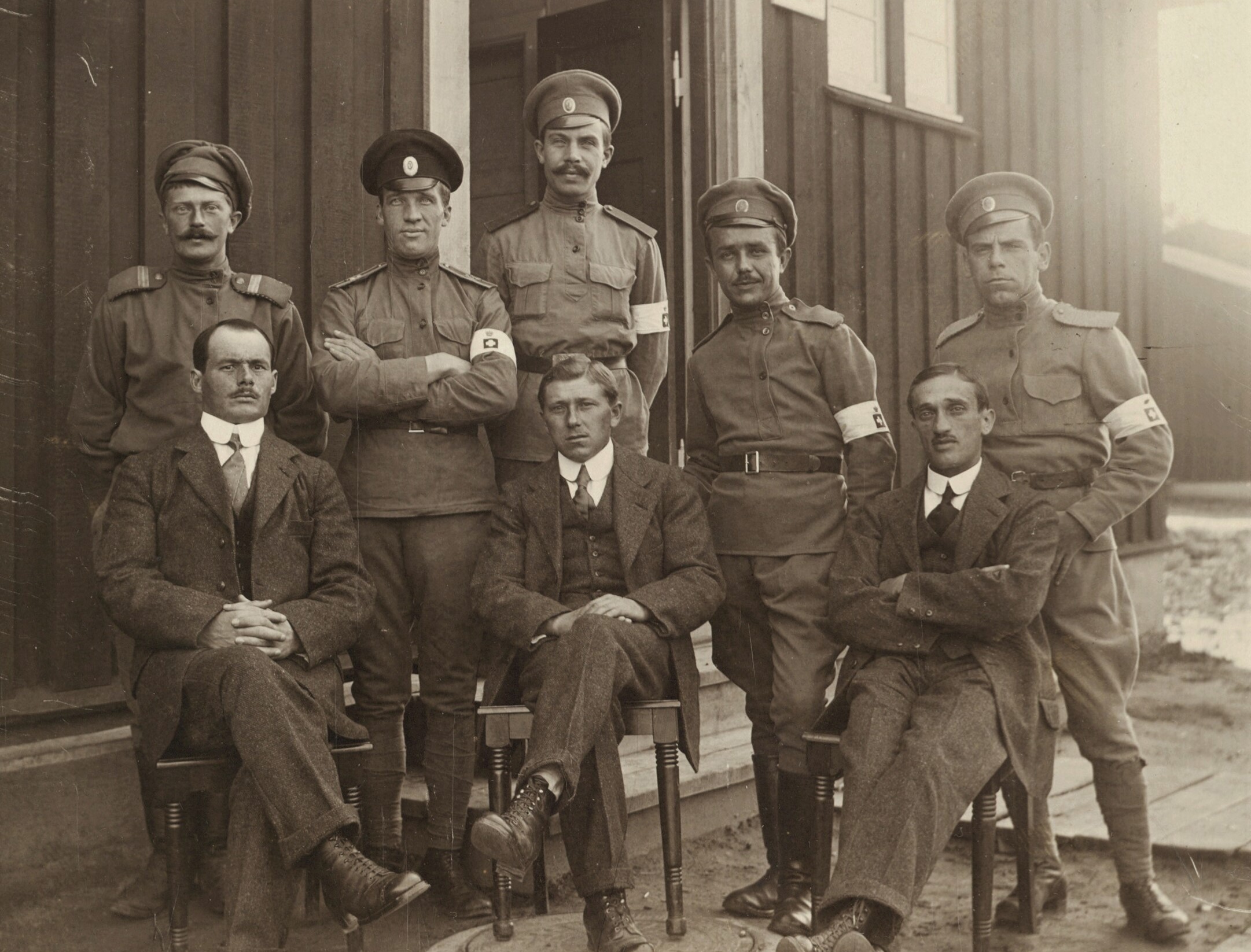Horserød Camp
Humanitarian compound for former prisoners-of-war

Russian soldiers, former prisoners-of-war fishing by a lake at Horserød Camp. The camp was set up as a temporary, humanitarian quarter where soldiers formerly in German prison camps were housed awaiting repatrification and transport to their respective home-land. The camp housed mainly Russian and French troops and had barracks for both officers and “common” troops. The compound included both a Casino, a Russian Church and a School and was partly overseen by the Danish Military, partly by Danish nurses and financed in part on private initiative. The camp was in function for allied troops between 1917 – 1919 © Europeana Collections, Creative Commons
Denmark was neutral in World War I. While the warring countries lost generations of young men on the battlefield, Denmark steered clear of the conflict. But Denmark was not totally untouched by the war. There were import troubles, food shortage and ration coupons on groceries. Danish soldiers were sent to the front. Men from what was then German Silesia had to say goodbye to their families and fight for Germany. An incredible number of soldiers perished during the war, and a great number were taken prisoner. Germany alone took 1,700,000 prisoners, most of whom were Russian. In Denmark several private persons suggested receiving and nursing prisoners so they could be sent home. The government was compensated for expenses and eventually made an official payment agreement with Germany, Russia and Austria-Hungary. Two prison camps were established: Hald near Viborg and Horserød near Elsinore. 100,000 prisoners of many nationalities were shipped to a temporary stay in Denmark until larger ships could bring them home. But they were not well when they arrived in Denmark; mistreatment, malnutrition, typhoid and post-traumatic stress disorder, which was called “shell shock” when no one could diagnose it, followed many of them and spread death in Denmark. In Denmark, they met the Spanish flu.








